Currency
Despite the popularity of doing so, subtracting the percentage change in the CPI or some other price index from the current 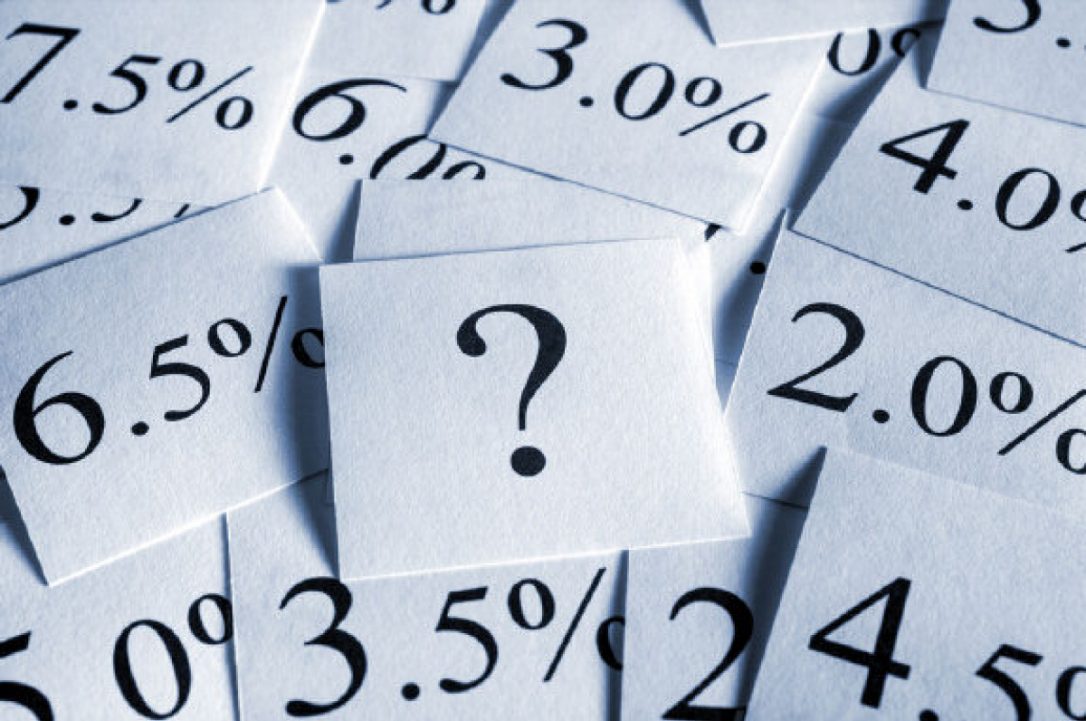 nominal interest rate will not result in a realistic or reasonable estimate of the current ‘real’ interest rate.
nominal interest rate will not result in a realistic or reasonable estimate of the current ‘real’ interest rate.
The method of real interest rate calculation summarised above is wrong in two different ways, each of which is sufficient to render the result invalid. The first and most obvious way it is wrong is that the CPI does not reflect the change in the purchasing power of money. This is not just because it has been re-jigged over the decades as part of an effort to minimise its value, but also because the entire concept of a “general price level” is nonsense. There is no such thing as a general price level because disparate items cannot be averaged. To explain by way of a simple example, averaging the prices of a car, a potato and a visit to the dentist makes no more sense than averaging the goods/services themselves. Clearly, a car, a potato and a visit to the dentist cannot be averaged.
However, even if, for the sake of argument, we assume that the CPI makes sense at a conceptual level and is a satisfactory estimate of the change in the purchasing power of money, we still couldn’t use it to determine the current real interest rate. The reason is that the real rate of return obtained from an interest-producing investment has nothing to do with the historical change in the purchasing power of money and everything to do with the amount by which the purchasing power of money will change in the future. For example, if you buy a 1-year bond today your real return will be determined by how much the purchasing power of money changes over the next 12 months; not by how much it changed over the previous 12 months.
So, when you see a chart showing the nominal interest rate minus the 12-month percentage change in the CPI, what you are looking at is NOT a chart of the real interest rate.
How, then, should the real interest rate be calculated and charted?
The hard reality is that there are some things worth measuring that simply can’t be measured. The real interest rate falls into this category. By taking into account money-supply growth and population growth and by making a guess regarding productivity growth it is possible to come up with a realistic, albeit very rough, estimate of how the purchasing power of money shifted over a long historical period, but it will never be possible to calculate the current real interest rate.
The best we can do is use the financial market’s average forecast regarding the future CPI in our calculations. In other words, the best we can do is use the TIPS (Treasury Inflation Protected Security) yield as a proxy for the real interest rate, since the TIPS yield is effectively the nominal yield minus the expected CPI. A chart of the 5-year TIPS yield is displayed below and discussed in the next section (in relation to gold).
The TIPS yield is not an accurate reflection of the real interest rate because it is based on the CPI and because the market’s expectations are sometimes wrong, but for practical speculation purposes it seems to be good enough.
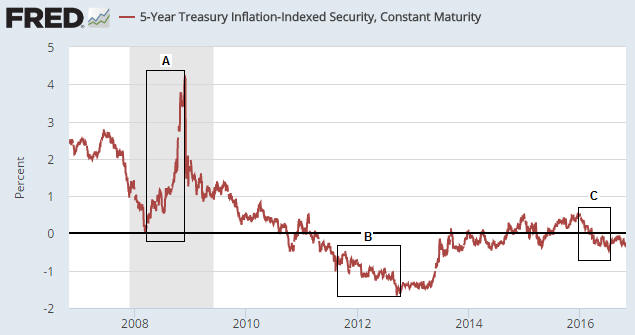
…related:
How “Risk-Free” Bonds Will Trigger Bloodletting in Bonds, Stocks, other Assets
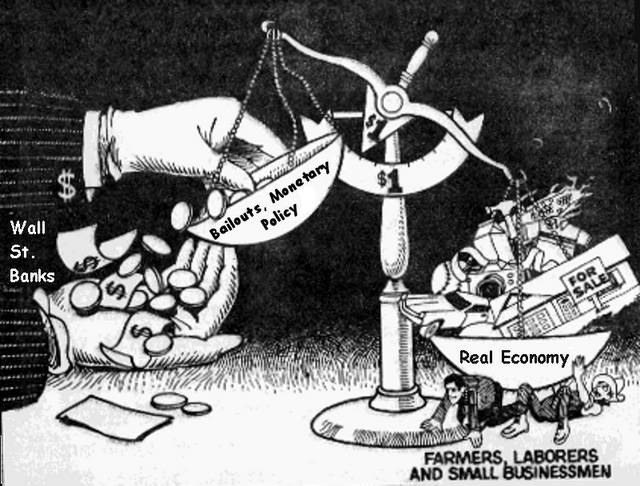 The world has gone mad. That’s in the financial and political markets.
The world has gone mad. That’s in the financial and political markets.
The media are going on about the passions unleashed by each candidate. In getting hit for the first time with a resounding “No!”, the belligerent Left is in shock. Ordinary Americans getting involved is a very defensive move. Justifiably so. Those who call for less government under traditional constitutional limits are called – and get this – “Nazis”. The following by Tocqueville is elegant:
“Society was cut in two: those who had nothing united in envy; those who had anything united in common terror.”
In the financial markets and with seemingly unlimited power, central bankers have been as reckless as the wildest of individual speculators in history. The difference is to compare longevity to ephemeral. In the US, the agent of rigging markets began quietly with the imposition of the Federal Reserve System in 1914. In the last twenty years, the intrusion has come remarkable. And the recent increase in intensity of intrusion is vividly confirming that the theories are not working. The next credit crisis will severely reduce belief in central banking. That would be for those outside the system who have been the innocents. Many central bankers, who have been the instigators of instability will suddenly lose belief in their own powers.
That a central bank bent on intrusion would work is, itself, a speculation.
The problem is getting bigger. There have been no forces of correction within central banking to temper ambition.
Lately, the Fed has been attempting to provide unlimited funding for an experiment in unlimited government. The experiment has transferred huge amounts of money and power from the “makers to the takers”.
That there has been no material increase in take-home pay in over 20 years is explained by the necessity of funding state ambition. Alternately, self-government has to be thrifty.
Those pandering to and living off of the avails of big government have run into an increasingly determined “No!”. The reaction is yet more strident pleadings to continue the privilege of “managing” the economy and “managing” the climate. Both are examples of bureaucratic audacity, without precedent.
Hard times have prompted popular uprisings that have been well-documented back to some 4000 years ago in Egypt. In the 1970s, Barbara Bell published her thesis that dynastic changes in Ancient Egypt were prompted by diminishing floods and consequent food shortages. Of course, in an authoritarian system, the governing classes controlled food supplies.
Security was provided by armed palace guards. Not of the governing classes, their sympathies were ultimately with the people, As conflict became acute, the guards laid down their spears. Historians called it interregnum, but it was a period of relative freedom and reduced privilege.
Anyone who had read Bell’s thesis noted the days in East Germany in 1989 when the border guards laid down their AK-47s so the folks could go “cross border shopping”. Dictator Honecker had to repeal the law obliging the state to murder Germans for violating borders.
Recorded since the early Middle Ages, local famines provoked “peasant bread riots”. It wasn’t until the very authoritarian 1500s when, as Durant described it, a typical peasant bread riot turned into an “Iconoclastic Rebellion”. The uprising was against the very nasty government of the Spanish Netherlands. Much troubling, worthy of mention but it did not force specific reform. That took most of the 1600s.
US governing classes are now giving a practical civics lesson on the importance of a constitution that limits the ambition of government. The lesson is that when the political movement is very compelling, the constitution is bypassed in another great experiment in authoritarian government. This is becoming too intrusive and expensive. Enough to prompt ending action, otherwise called reform.
Recent political turmoil should not prompt the conclusion that Americans are ungovernable; the problem is that the governing classes have become ungovernable.
A modern “bread riot” by the “deplorables” is underway. But the governing classes are well protected from reform. This is not by the military or police. This time around, the palace guards are the Main Stream Media, who are of the governing classes. While they don’t have spears or AK-47s their stonewalling will continue to defy reform.
The last Great Reformation occurred in the early 1600s. This was inspired by massive corruption and defended by an essentially state-controlled media. In 1632, England’s Star Chamber banned all “news books”. You get the concept. The uprising then had its printing done in Holland.
Fortunately, declining costs of printing and the rising prosperity of the middle classes launched a massive change whereby every agency of coercion was examined, then discarded or improved. Science became unpoliticized and became, well, science. The Earth was again permitted to rotate around the sun.
A similar reformation is building now. Is it urgent enough to favour the GOP which is being reformed?
Don’t know, but Trump is not the risk; the continuation of corrupt government is.
Deflating asset prices will soon begin to restore sanity to the financial markets. Sanity in the political markets will slowly follow. We will reserve judgement on central banking.
Everything is so connected that a move in the US Dollar has broad implications. Believed to have made a low in May, the US Dollar has broken out of a chart formation and moved through a downtrend line. What comes next …..
….Don’t miss Martin Armstrong: The Worlds Top Forecaster, Reputation 2nd to None On The Markets & The US Electlon

Quotable
“Poetry may make us from time to time a little more aware of the deeper, unnamed feelings which form the substratum of our being, to which we rarely penetrate; for our lives are mostly a constant evasion of ourselves.”
–T. S. Eliot [My T.S. Elliott favorite, Little Gidding]
Commentary & Analysis
Oil: Currencies may be telling us oil prices are about to fall…
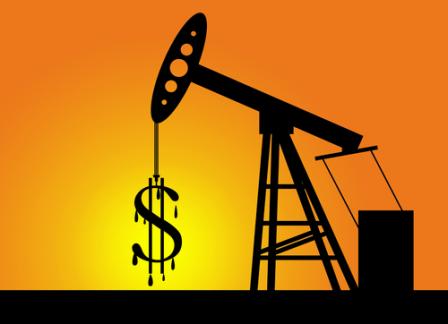
If you look at the near-term price action of the Canadian dollar (CAD) and Norwegian krone (NOK) and assume these two currencies tend to move in tandem with oil prices, it might suggest oil is about to head south, despite the vaunted agreement to control production. NOK (red line) has done a pretty good job of leading crude lately…

We’ve been looking to add oil short in our Key Market Strategies portfolio, using the oil ETF USO as the proxy. Below is a daily chart of USO we shared with our subscribers recently, looking to get short (or long a reverse oil ETF) on a close below 11.37:

A breakdown in oil here could carry back to the swing low at 9.23 or more for USO.
The weekly chart of crude oil futures (WTI) also suggests black gold may be turning over (a flat correction).

Of course if the run in the dollar is due for a rest, hold the charts upside down when you review.
Have a great weekend.
Jack Crooks
President, Black Swan Capital
The currency is down by 0.7% at 1.3312 per US dollar as of 8:38 a.m. ET.
Just minutes earlier, data showed that core retail sales came in at 0.0% month-over-month in August, below expectations of an increase of 0.3%.
Additionally, CPI rose only 0.1% month-over-month in September, below expectations of a 0.2% uptick. Meanwhile, core CPI rose 0.2% month-over-month, as expected.
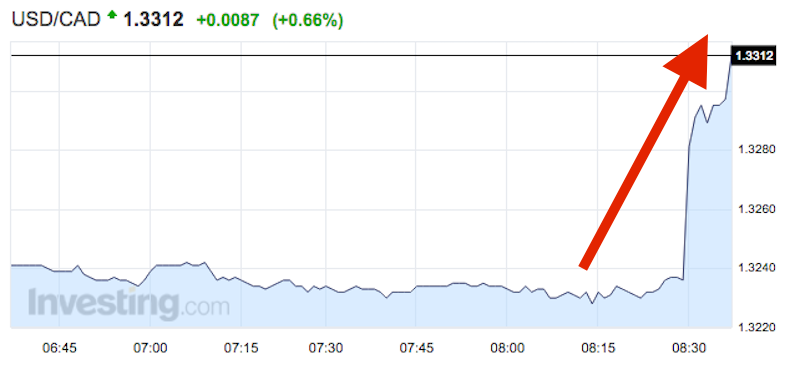
….also: This Indicator Says The Price Of Gold Is Now Headed Above $1,700













